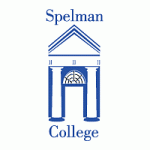Below is a summary of the abstract you submitted. Presenting author(s) is shown in bold.
If any changes need to be made, you can modify the abstract or change the authors.
You can also download a .docx version of this abstract.
If there are any problems, please email Dan at dar78@pitt.edu and he'll take care of them!
This abstract was last modified on May 16, 2025 at 1:57 p.m..

Advances in Oxford Nanopore Technologies (ONT) are transforming course-based undergraduate research experiences (CUREs) by making microbial genome sequencing more accessible and affordable. ONT’s long-read DNA sequencing provides high raw read accuracy (Q20+ or >99.0%), empowering students to sequence their isolates directly in the classroom. In this study, eleven phages were isolated from soil using Arthrobacter globiformis B-2979 and Gordonia rubripertincta NRRL B-16540 as host bacteria. Genomic DNA was sequenced using an ONT MinION Mk1B with an R10.4.1 flow cell (FLO-MIN114) and assembled using Flye. To assess assembly accuracy, DNA from ten phages was pooled into three samples and sequenced using Illumina technology. Pairwise alignments between Nanopore and Illumina assemblies revealed that eight of the ten alignments were 100% identical, while the remaining two differed by only two base pairs (99.995% identical) with no gaps. Genome sizes ranged from 38,515 bp (Glotell; subcluster AS3) to 195,163 bp (ReginaGlobina; cluster FC). These phages were grouped into seven distinct clusters or subclusters: AO3 (Nostromo), AP2 (Forrestell, GurleyGirl, Kubulix, and Ollypop), AS2 (Antrice), AS3 (Glotell), AY (Bhageatrice), DW (BabyBenet and Zodiariah), and FC (ReginaGlobina). These findings underscore the utility of ONT in educational settings, enabling students to continue to take ownership of their research by generating high-quality genomic data and contributing to the discovery and characterization of diverse phages.
